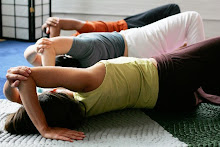 Image via Wikipedia
Image via Wikipedia
A story last week caught my eye, and I just had to share it. You can read it on The Onion here. But here's the main text of the article:
Study: Majority Of 'Calm Downs' Ineffective
ITHACA, NY—A study published recently in the Journal Of Mental Health found that attempting to reverse a loud emotional display by asking an individual to calm down was effective only 9 percent of the time. Researchers at Cornell University's behavioral lab induced anxiety in subjects by administering a series of electric shocks, after which everyone was told to "calm down" and "take it easy." "We were surprised to find that not only were these phrases ineffective, but in an overwhelming number of cases they actually exacerbated the situation," psychologist Kenneth Pulaski said. "Even when participants were told to 'just take a deep breath,' they became more and more irate and were eventually reduced to a screaming mess." The study also concluded that telling someone to "just mellow out" would invariably lead to a researcher being punched in the face.
This is a wonderful finding, and thank goodness research has "proved" it, finally! Point noted. Check.
Have you also noticed that, as a professional brings your attention to your tight muscles or pain, they often tell you that you "just need to relax" or "stop holding" or "stop resisting?" It's the same thing, isn't it? The problem is, most people have FORGOTTEN how to "relax." If you knew how to do it, you'd be doing it, right?
There's another problem with this whole "relaxation" idea. Deep down, we know that the state of total relaxation you feel during a wonderful massage, or the momentary zombie-like feelings right after a Feldenkrais lesson, are not very useful, except perhaps for falling asleep! Our problem is that we have only two choices: either be a caffeinated, wound-up, stressed-out, Type-A maniac, or be an unconscious puddle of invertebrate goo somewhere on the floor. Most people realize, at some level, that total relaxation is not a real solution for navigating the demands of daily life.
There is good news, however. Just as you may have forgotten what easy, pain-free, effortless action (much better, distinct from "relaxation," wouldn't you say?) feels like, you can RE-LEARN those sensations and find some relief. That's where movement education, or re-education, is valuable, and that's what The Feldenkrais Method teaches. That's why I don't tell my clients to relax. Students of the Method re-learn the patterns of moving, feeling, and sensing that are part of our human birthright.
Moshe Feldenkrais wrote a fascinating book, entitled "The Elusive Obvious." In it, he explores an essential human folly: we find one good idea, and expect to apply it everywhere and from henceforth, with uniformly positive results. However, this is rarely the case. The book gets you thinking more deeply about your unconscious assumptions about yourself and the world around you. The idea of The Onion's made-up research study is one of those "elusively obvious" notions -- one you might not have thought of before, but leads to a dawning awareness.


![Reblog this post [with Zemanta]](http://img.zemanta.com/reblog_e.png?x-id=b7b53ae5-422c-49c7-9987-2fde73acb29b)

![Reblog this post [with Zemanta]](http://img.zemanta.com/reblog_e.png?x-id=da5b4b21-42ae-46e5-9571-8a68230c953e)
















